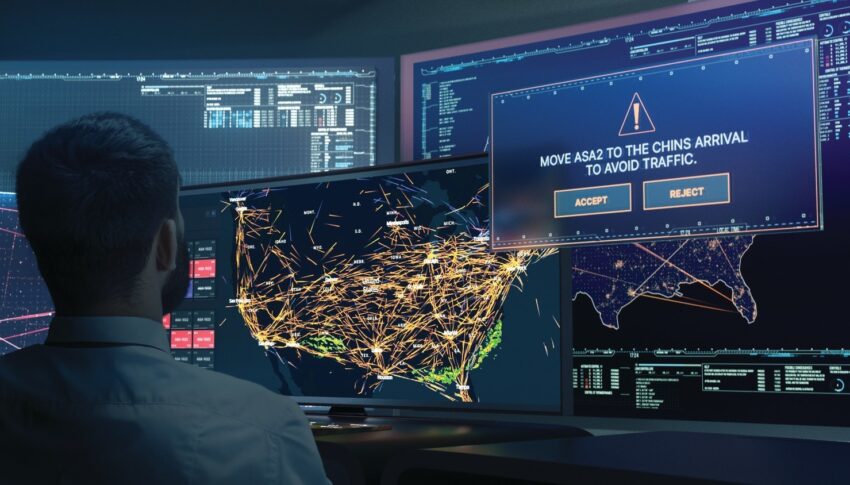The Internet of Things — the network of connected, interlinked sensors that inform automated and human decision making — is already, and will increasingly be, a critical part of aviation’s sustainability objectives.
Fundamentally, the sustainability promise of aviation IoT is about improved efficiency, throughout the aviation journey and the aircraft lifecycle, whether in the air, at airports, in manufacturing or in MRO.
A six-month trial of an AI and machine learning platform by Alaska Airlines resulted in, the carrier says, “an opportunity to reduce miles and fuel use for 64% of mainline flights, of which dispatchers evaluated and accepted 32%”, and Alaska has doubled down on the technology.
In operational terms, Satair cites innovations around continuous descent, real-time flight path control, automated management for aircraft and service vehicles, additive and on-demand manufacturing, plus virtual and augmented reality in design and MRO.
On the ground, Airbus suggests that the IoT could cut energy usage in manufacturing by as much as a fifth. “IoT enabled smart meters can offer information on energy usage in aircraft production, which could lead to significant cost savings and sustainable operations,” says the European airframer. “Because advanced analytics algorithms analyse the usage and propose energy-saving measures, energy consumption could be reduced by 20%.”
IoT efficiency improvements at airports could also slash local airport emissions — critical for local air quality — and reduce airports’ climate impact.
But in the air, many of these benefits require a connected aircraft, and we sat down with Ryan Stone, president of inflight connectivity provider SmartSky Networks, to dive deeper from that perspective.
Overall, “a significant contribution to sustainability will be the combination of connectivity with more efficient flight path management through capabilities such as SmartSky’s five-dimensional trajectory (5DT) path management systems and methodologies,” he explains. “Real-time data from both ground and inflight systems will be combined to provide continuous flight replanning as the numerous airspace and aircraft constraints change during a flight. This simultaneous use of real-time IoT and 5DT will provide the foundation of reduced CO2 emissions and further fuel savings, or in the case of alternative propulsion systems such as electric and hydrogen, extended ranges.”
Sustainability benefits of the IoT are already being realised, including via programs like IATA Turbulence Aware, and AI flight optimisation recommendations — in the context of human decisionmaking — is already a part of many operations centres.
“Improved services for collecting data inflight have already provided significant gains for both FOQA and MOQA activities,” Stone says. “Additionally, the capture of engine data has led to the design and development of better predictive maintenance and higher performing engines. Another example is the crowd-sourcing of turbulence data from aircraft instrumentation and the use of that data in situational awareness application for pilots and dispatchers.”
Challenges remain, of course, with everything from data ownership and privacy to cost-benefit decisionmaking, interoperability challenges, certification and the processing split between in-air and on-ground systems all key questions that have yet to be resolved.
Wider technological agendas will also need to be taken into account, with Stone noting that “air traffic management and infrastructure for Advanced Air Mobility will be heavily dependent on IoT and input from a myriad of sensors. To achieve AAM objectives, we must rethink and reimagine how we collect, transmit, share, process and communicate real-time data from aircraft.”
As elsewhere, there are of course cybersecurity issues to overcome, with a Munich Airport executive in an article from airports trade body ACI saying last year that “the Internet of Things is presently a security nightmare”.
But part of resolving the certification, data ownership, privacy and interoperability challenges will inherently be ensuring that a smart aircraft is more secure than a smart fridge or a smart lightbulb. That will require a concerted effort between regulators, the tech industry, the aviation industry, and other stakeholders, but that makes it no less possible — or necessary.
Author: John Walton
Published: 3rd August 2021
Join the Challenge
We are discussing this over in our Challenges Area: How does the industry ensure secure, regulated and efficient use of the Internet of Things? The challenges are huge and the benefits are worth fighting for – but where do we start?




